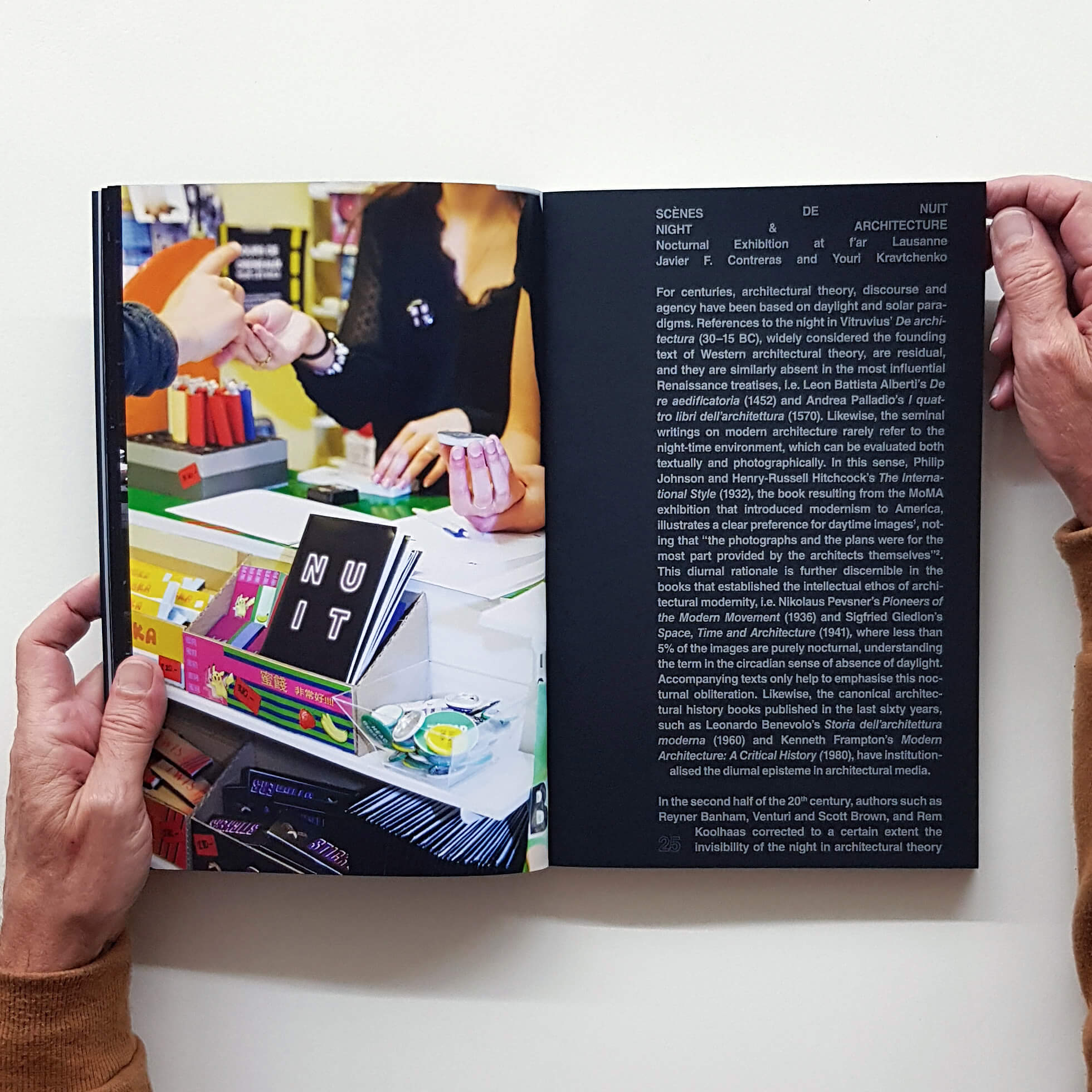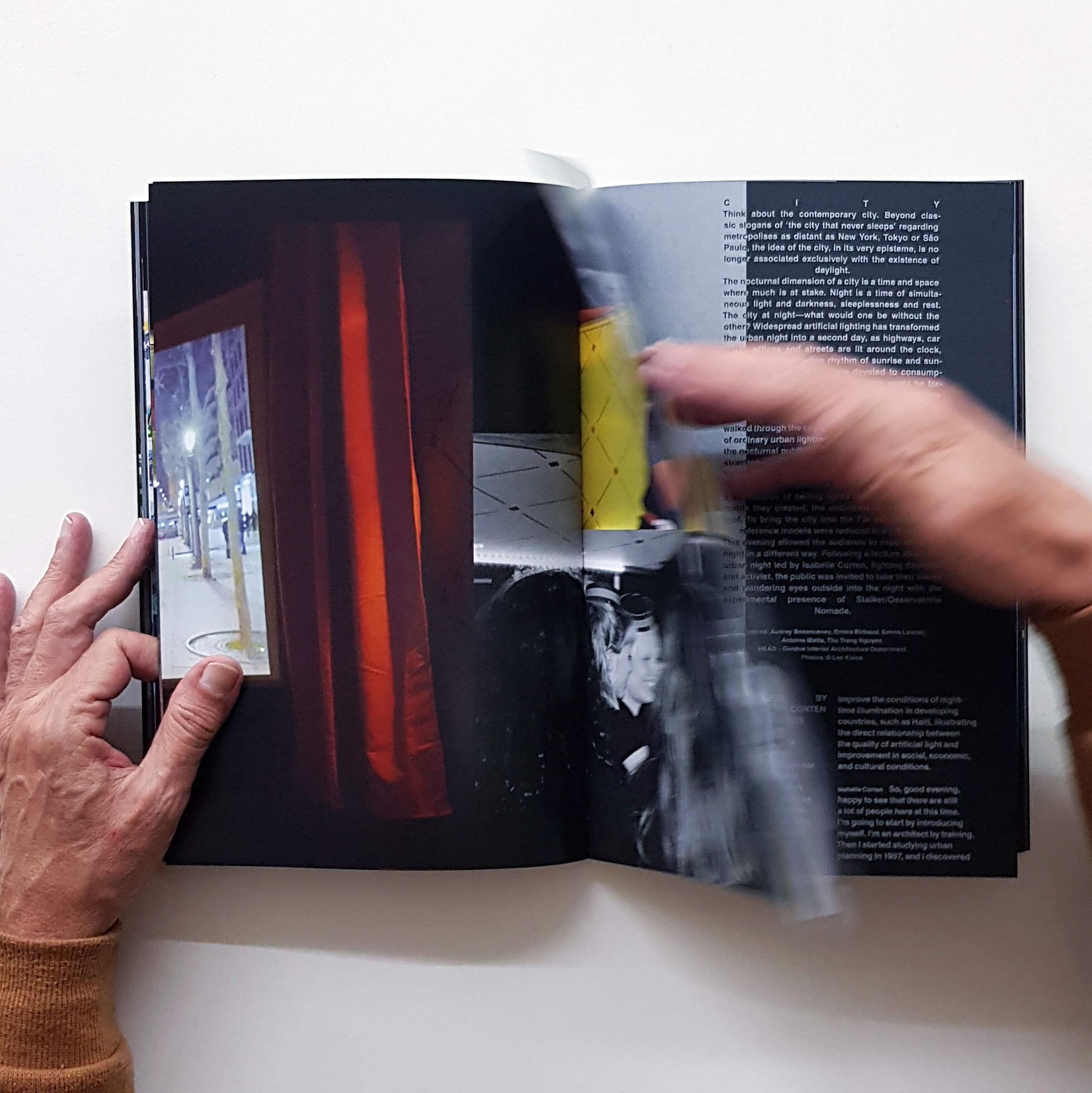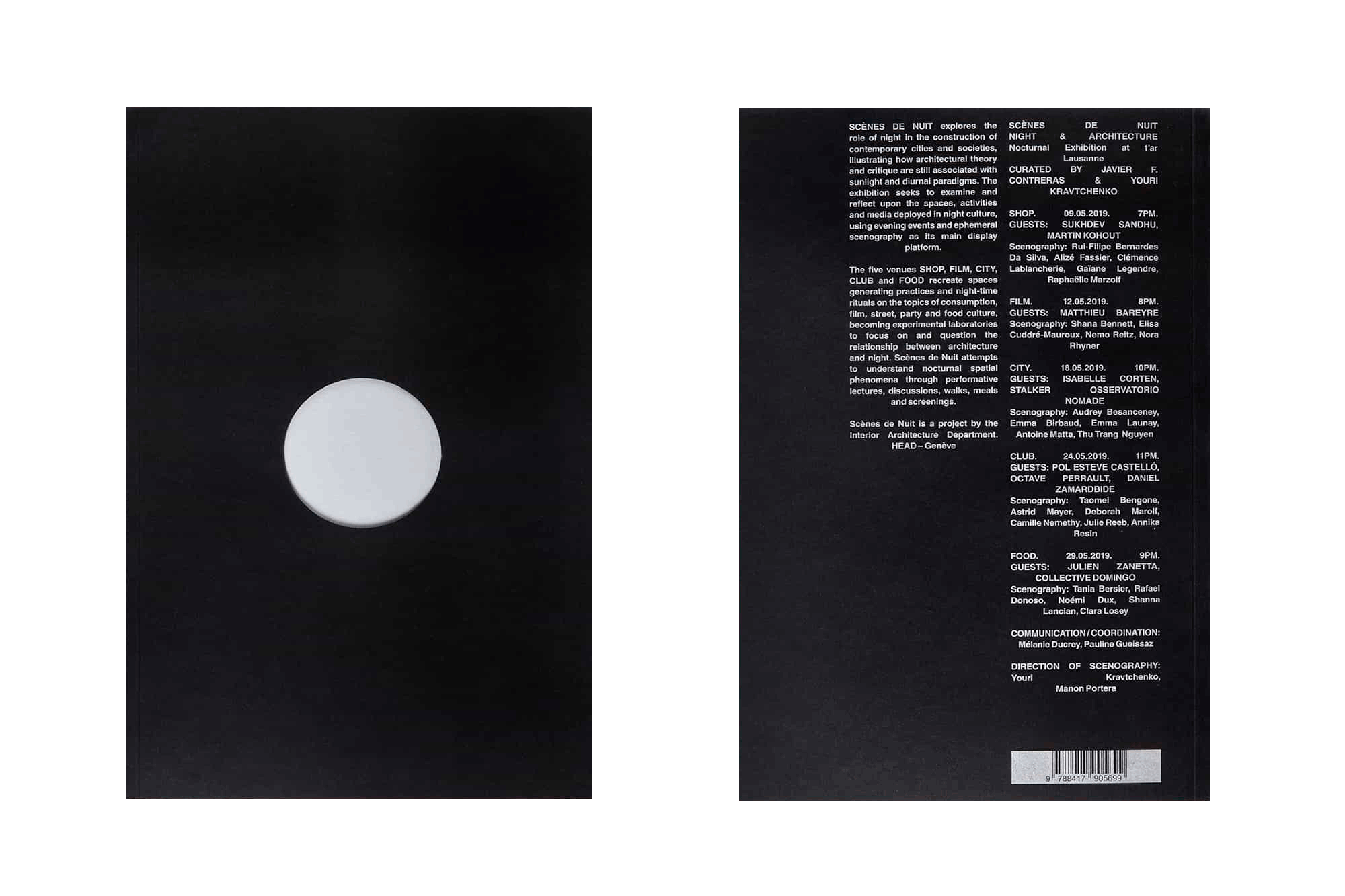Nocturnal Exhibition: f'ar Lausanne, May 2019 | Curators: Javier Fernández Contreras, Youri Kravtchenko | Scenography: BA students in Interior Architecture, under the direction of Youri Kravtchenko and Manon Portera | Publisher: Geneva: HEAD – Publishing / Madrid: Ediciones Asimétricas, 2021 | Graphic Design: Studio Nüssli+Nuessli | Photography: © Ediciones Asimétricas
"Scènes de nuit" examines the role of night in the construction of contemporary cities and societies, questioning whether architectural theory and critique are still predominantly associated with sunlight and diurnal paradigms. The book, a catalog resulting from the eponymous exhibition held at f'ar Lausanne in 2019 under the curation of Javier F. Contreras and Youri Kravtchenko, reflects upon the spaces, activities, and media deployed in night culture, utilizing available photography, footage, records, and transcriptions as its primary editorial material.
The f’ar exhibition opened only five evenings, with the scenography and guests changing depending on the nocturnal spaces analyzed and discussed. Its five evenings— shop, film, city, club, and food —explored practices and rituals in the nocturnal space-types of corner shops, cinemas, streets, nightclubs, and restaurants. These spaces served as experimental laboratories, allowing for a focus on and questioning of the intricate relationship between night and architecture.
Research was conducted in various formats, temporalities, and dimensions, with a focus on night space-types through activities such as nocturnal lectures, workshops, performances, parties, and screenings. The exhibition suggested that there is no difference between format and content, between the production of nocturnal knowledge and the fabrication of "night scenes." In questioning the day (natural light) as a paradigm of architecture, the goal was to be as open as possible to experimenting with new ways of conceiving creative architectural processes and discursive methods of thinking.
With a scenography developed by HEAD’s BA students in Interior Architecture under the direction of Youri Kravtchenko and Manon Portera, the exhibition developed its own measuring instruments and tools, producing fragments at various scales, typological events, and atmospheric phenomena suitable for identifying nocturnal codes. This allowed Scènes de Nuit to outline a research platform where in-situ experience was at the center of the objectives. The project used programmatic and architectural night-types as both hypotheses and research methodologies, creating a framework that worked on a local and global scale, establishing a simultaneous geography of nocturnal proximity.
The exhibition aimed to work in the form of immersion, avoiding transforming the night into a sanitized research object. Thus, Scènes de Nuit thought at night during the night. This method allowed fluidity and malleability of its object in the foreground of the lived experience. Indeed, for all the reasons exposed (nocturnal rhythm, change of perception of space, change of light, etc.), research at night was necessarily modified in its manifestation and, therefore, in its content. This fluidity of each precise moment of the night, by its movement and perpetual change, required a polymorphic approach so that the investigation was open to a nocturnal hic et nunc. The structure of the book aligns with the exhibition, where each chapter comprises a photographic record and transcriptions of the discussions and lectures from each evening, along with the corresponding dates and opening times.





